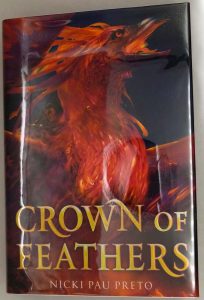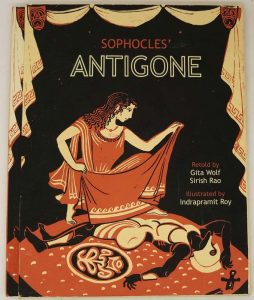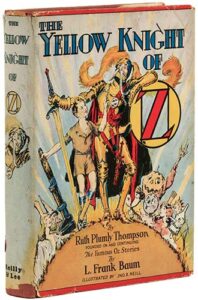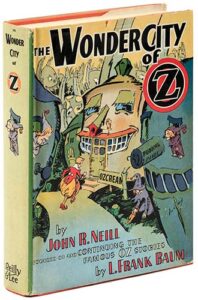The Mystery of the Ivory Charm is the thirteenth volume in the Nancy Drew Mystery Stories series. It was first published in 1936 by Grosset & Dunlap under the pseudonym Carolyn Keene. The actual author was ghostwriter Mildred Wirt Benson.
This is one of the few Nancy Drew books where an acknowledgement has been made to Mildred Wirt Benson. The acknowledgement from the 1974 edition reads as follows:
“Acknowledgement is made to Mildred Wirt Benson, who under the pen name Carolyn Keene, wrote the original NANCY DREW books.”
Summary (original edition)
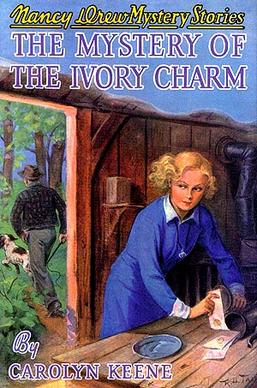
In The Mystery of the Ivory Charm, a cursed elephant charm carved from forbidden ivory draws Nancy Drew into the shadowy intersection of exotic animal smuggling and Hindu mysticism in this atmospheric Depression-era mystery.The story begins with Nancy rescuing a dark-eyed boy named Rishi from a cruel circus manager, his only possession being an ivory charm said to bring misfortune—a prophecy that seems fulfilled when the circus strongman collapses after touching it.
The mystery deepens at the Wadsworth estate, where a private menagerie of imported animals and a tiger-skin rug with peculiar bullet holes suggest connections to illegal big game hunting. Nancy discovers the charm’s hollow core contains a scrap of parchment with Sanskrit verses, while Rishi’s fragmentary memories hint at his noble Indian ancestry. As she investigates, Nancy must navigate the prejudices of small-town River Heights toward the foreign boy, even as she uncovers how local taxidermy shipments conceal smuggled artifacts.
The 1936 original pulses with period-specific dangers—Nancy narrowly avoids being locked in a steam-filled tiger cage disinfection chamber, deciphers a cargo manifest written in colonial shipping code, and confronts a villain who uses superstitious fear as a weapon. Unlike later revisions that sanitized cultural elements, this version retains the poignant subplot about Rishi’s stolen inheritance and the heartbreaking scene where he tearfully explains how British colonial unrest separated him from his family. The ivory charm itself becomes a powerful symbol—its exquisite craftsmanship belying the brutality of its origins, much like the elegant Wadsworth estate hides dark secrets.
This novel stands out for its unflinching portrayal of post-colonial displacement and wildlife exploitation, wrapped in a classic whodunit. The climax at a midnight animal auction—where Nancy uses the charm’s cursed reputation to turn criminals against each other—showcases her growing understanding of how to wield psychological insight alongside deductive reasoning.
Nancy Drew #13 –The Mystery of the Ivory Charm First Edition Book Identification
Only the first few printings of the first/second year are shown. Printings codes are based on the Farrah Guide, 12th printing. Please refer to the guide for later printings.
Note: Glossy+: Glossy frontis + 3 glossy internals.
| Printing | Frontis | Copyright Page | Rear Book Ads |
|---|---|---|---|
| 1936B-1 | Glossy+ | Nancy Drew #1-13 | Nancy Drew #1-10/Judy Bolton #1-9/Melody Lane #1-5/Dana Girls #1-5 |
| 1936C-2 | Glossy+ | Nancy Drew #1-13 | Nancy Drew #1-10/Judy Bolton #1-9/Melody Lane #1-5/Dana Girls #1-5 |
| 1937A-3 | Glossy+ | Nancy Drew #1-13 | Nancy Drew #1-10/Judy Bolton #1-9/Books for Girls(7)/Melody Lane #1-5 |
| 1937B-4 | Glossy+ | Nancy Drew #1-13 | Nancy Drew #1-10/Judy Bolton #1-9/Melody Lane #1-6/Books for Girls(9) |
Nancy Drew #13 –The Mystery of the Ivory Charm First Edition Dust Jacket Identification
| Printing | Price | Front Flap | Rear Panel | Rear Flap | Format |
|---|---|---|---|---|---|
| 1936B-1 | 50c | Nancy Drew #1-13 | Judy Bolton #1-9 | Dana Girls #1-5 | 3 |
| 1936C-2 | 50c | Nancy Drew #1-13 | Judy Bolton #1-9 | Dana Girls #1-6 | 3 |
| 1937A-3 | 50c | Nancy Drew #1-13 | Judy Bolton #1-9 | Dana Girls #1-6 | 3 |
| 1937B-4 | 5050 | Nancy Drew #1-14 | Judy Bolton #1-10 | Dana Girls #1-6 | 3 |

Reference:
- Farah’s Guide to Nancy Drew, 12th printing


